Taking to the streets
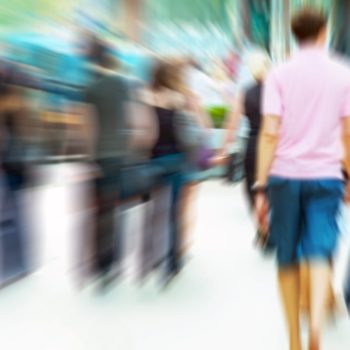
For any retail business to succeed, strong footfall is key. In the case of convenience stores, that’s all about multiple products and services in-store, going beyond the traditional whenever possible. In short, a convenience store can be much more than just groceries, writes Doug Whelan
15 June 2018
With electronic and online services continuing to permeate and affect every aspect of consumers’ lives, the retail industry is changing with it. There will always be a need for bricks-and-mortar stores, especially when they continue to innovate and evolve. Recent years in particular have seen stores offer a broader range of in-store services than ever, as brands and retailers innovate to drive footfall and generate repeat business. The more there is on offer, the more of a destination a store can be, and the more repeat and return business it will see.
In past decades, it was probably cigarettes and newspapers that were the main drivers of footfall. Now, a whole host of services and more are on offer, from payment of bills electronically, postal services, games, esoteric beverage brands and much more.
Q&A with Tina Twohig, YourCash country manager, Ireland

Tina Twohig, YourCash country manager Ireland, says the company can help contribute to a community atmosphere in stores due to its offering
YourCash is an international company that provides in-store ATM services to retailers. With a range of options and preferences to choose from, country manager Tina Twohig outlines how to choose what’s best for you
Q. In-store ATMs are very common; what are the practical benefits to the retailer of having a YourCash ATM on the premises?
A: We call our ATMs a business ally. They will add to a store’s bottom line, mainly by reducing bank lodgement costs since the money used to fill the ATM is taken from previous days’ takings. We have also seen a rise in basket spend, sometimes as much as 65%, when there’s an ATM service offered. More importantly, the ATM service helps a community. People come into the store more often, and once in, they are more likely to buy something. Cash doesn’t need electricity or a phone line to function, so it’s handy for every eventuality!
Q. What are the benefits to the consumer?
A: We think one of the biggest benefits is secure access to their cash, in an environment they trust and having the service available locally. Our ATMs can be comfortably installed in rural areas, as long as there’s a need and the ability to fill it or in busy high streets. YourCash ATMs support a community’s ability to get cash when they need it; with banks withdrawing from the rural locations, we’re proud to support and backfill those locations.
Cash is also a great budgeting tool! Once it’s gone, it’s gone, and this helps consumers to keep control of their finances. We all have budgets to manage and having cash-in-hand tends to keep you measured on spend.
Q. YourCash offers a self-fill ATM system, or a fully managed one. What are the differences between these two options, and how can a retailer decide what is preferable for their business?
A: As part of the Euronet Worldwide company, we offer both propositions. The main differences are that with the self-fill model, cash takings are used to fill the ATM every day. We then electronically transfer the money withdrawn from the ATM, straight back into the chosen business bank. A self-fill ATM works really well in locations that have a regular customer base, enough cash available to fill the ATM daily and offer other services such as the Lotto and parcel collection.
With the fully-managed model, the ATM is filled by the cash in transit company G4S, and the merchant has no access to the machine. There are no daily responsibilities, but location is key for these sites. For a site to qualify for a fully-managed ATM, they need to be located in a busy, high footfall location and ideally have long opening hours. For both propositions there are no maintenance or service costs to the merchant, all we require is a dedicated power source.
Whichever proposition a retailer decides upon, our regional managers will work with the merchant to ensure the terms work for both parties. We work on a win-win basis.
Q. YourCash is part of the Euronet Worldwide company. How does this global reach help with community-based banking?
A: That’s a great question. The landscape is changing, and banks have had to make some tough decisions to secure their infrastructure. In turn, this has opened the market to allow new payment providers in. Euronet has always driven payment development and as part of that development, the ATM is changing to support the gaps the bank closures have formed.
Our ATMs (also available in other countries) already offer cash recycling- where you can bank your business takings via the ATM, which essentially refills it – provide cardless cash withdrawals via a bar code scanner and offer a service allowing consumers to buy travel or club tickets – all from the ATM.
Q. Can the ATM support community-based banking?
A: We think so! Cash machines are developing all the time; who knows what the future is going to bring? Maybe the next generation of ATM will become a one stop payment hub, so you can draw cash, pay bills, buy Lotto tickets, organise parcel deliveries or book and pay for a hotel.
Q. What does the future hold for the group, as to how/where people spend their money evolves?
A: There are regular articles and discussions around the death of cash and the need to go cashless, but we need to take a balanced approach here and remember it will be the consumer that will lead the way in the payments market. It will be the consumer that decides when cash has seen its day and while we have these articles predicting the death of cash, it remains the largest payment method in Europe. In fact, the European Central Bank recently advised that over 75% of point of sale payments were made using cash.
As for the future, Euronet and YourCash will continue to provide ATMs and secure payment methods, more than likely with new technological advances as they emerge. We will continue to develop our payment portfolio to match the needs of the consumer. Yes, the use of cash has reduced, particularly with the introduction of contactless payments, but it still remains a dominant payment method and at a recent industry conference, they’re now predicting we will go cardless before cashless. Ultimately, the decision will be made by the consumer and if recent surveys are to be believed, cash is still a strong contender as a payment method, certainly for the foreseeable future.
Fresh growth
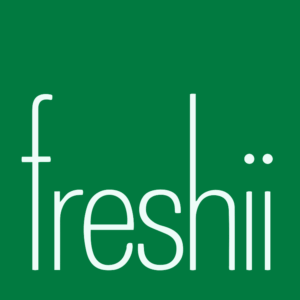 There is no doubt that Ireland, and indeed the world, is in the midst of a health and wellness movement. Among this new trend, that is seeing healthy products shoot up the Kantar Worldpanel Top 100 Master Brands listing (see page 36), a new ‘healthy fast food’ category is making waves in the food-to-go sector.
There is no doubt that Ireland, and indeed the world, is in the midst of a health and wellness movement. Among this new trend, that is seeing healthy products shoot up the Kantar Worldpanel Top 100 Master Brands listing (see page 36), a new ‘healthy fast food’ category is making waves in the food-to-go sector.
At the forefront in Ireland is Freshii, a fast-growing restaurant brand at the forefront of the global health and wellness movement. With a tasty and diverse menu of hot burritos, bowls, soups along with salads and wraps, Freshii appeals to a broad spectrum of customers across many demographics, particularly the millennial generation. In fact, Freshii was ranked the fastest growing multinational chain restaurant in the world and continues to grow at a faster pace than another global restaurant chain did in its early years.
Freshii isn’t about quinoa or kale or cucumbers; it’s about making health and wellness accessible to all. This means that as health trends evolve through society, the Freshii brand is uniquely positioned to evolve with them.
The company has highly experienced, quality management across its Irish stores and is leading the industry with initiatives that are good for the planet. Freshii’s eco-friendly packaging, low usage of electricity and flexible, environmentally friendly store designs are evidence of the company’s commitment to a greener environment.
Roasted By hand
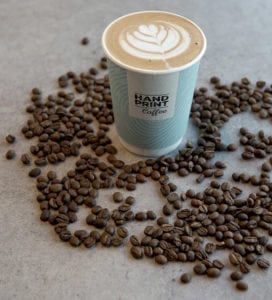
Handprint Coffee is manufactured by a team of veteran coffee blenders
Handprint Coffee is led by Bell Lane, Ireland’s leading artisan speciality coffee roaster, in a joint partnership with Freshii Ireland’s master franchise owners, Dave O’Donoghue and Cormac Manning.
Sourcing only sustainable coffee from small quality-driven producers, Handprint roasts its coffee by hand and trains baristas at its centre of excellence. It also serves a range of locally-sourced pastries and tray bakes, while each cup is served in a fully compostable cup and packaging.
Bell Lane has been roasting coffee since 2012, developing blends and roasting single origin coffee to optimise flavour. The team has more than 30 years’ experience in roasting, and has produced many award-winning espresso blends to date.
There are already two Handprint Coffee stores in Dublin; Point Square and Sandyford with future franchise options available for suitable partners. Interested parties should contact Cormac Manning or Dave O’Donoghue at handprintcoffee@gmail.com.
Lower payments
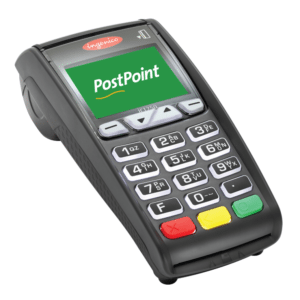
PostPoint’s card payment system is safe and secure, and can help save retailers money
Whether you’re starting out in business or looking to switch provider, PostPoint can help you take secure credit and debit card payments in person or over the phone. Meanwhile, since PostPoint is a division of An Post, retailers can trust that payments will be processed safely, securely and effectively, every time.
Conveniently, if you decide to choose PostPoint as your card payment provider, a qualified An Post engineer will visit your premises to install the required terminal. An additional pin pad and terminal stand is available upon request.
PostPoint offers a range of different card payment bundles and contract lengths. While some providers may tie a retailer in to contracts lasting up to three years, PostPoint offers six and 12 month contracts. What’s more, upon switching to PostPoint some retailers have saved up to 30% on their card payment charges.
Could click & collect come to the rescue of bricks-and-mortar stores?

CBRE reports 38% of retailers on Dublin’s Henry Street and Grafton Street offer ‘click & collect’ facilities
While online shopping is often perceived as a direct threat for traditional bricks-and-mortar retailing, the ‘click & collect’ function, which is increasingly being offered by retailers across the board, can be a strong footfall driver.
Demonstrating its potential for growth, ‘click & collect’ continues to rise rapidly in the UK, outpacing growth in the online retail channel. In fact, according to data and analytics company, GlobalData, sales in this segment are forecast to account for 13.9% of total online spend in 2022, 1.9 percentage points higher than in 2017.
As you would expect, fashion retailers are leading the charge in this regard, but supermarkets are also getting in on the action. GlobalData’s latest report, ‘Click & Collect in the UK, 2017-2022’ states clothing and footwear will drive the click & collect channel, accounting for 61.2% of spend by 2022, as online sales in the sector continue to rise.
Fly in the ointment
While the click & collect market is forecast to increase 55.6% over the next five years in the UK to reach £9.6bn in 2022, growth will slow as the market matures. Despite rapid growth anticipated over the next five years, GlobalData points out click & collect sales will be impacted as retailers continue to close unprofitable stores as physical locations struggle against the online channel, reducing the number of click & collect locations.
In addition to this, more retailers are investing in delivery saver schemes following the success of Amazon Prime and ASOS Premier, encouraging shoppers to subscribe and save on delivery costs. As this is a primary driver of click & collect, this will also hinder sales via the channel.
Ensuring delivery
“Click & collect sales will become increasingly threatened as delivery saver schemes become more widely available and retailers continue to extend their choice of fulfilment options,” says Charlotte Pearce, retail analyst at GlobalData. “Retailers must ensure that their click & collect propositions are competitive in terms of price and/or threshold as well as speed of delivery into stores. This will help to drive footfall into stores and encourage additional spend at the retailer.”
GlobalData’s report also states that click & collect user satisfaction fell 11.2 percentage points from 89.6% in 2016 to 78.4% in 2017. Retailers are failing to provide an adequate experience for click & collect users with high expectations looking for a fast, hassle-free service. With more fulfilment options being offered by retailers, including same day delivery and third-party pickup via Collect+, Doddle and Amazon lockers, for example, click & collect may not be the most convenient option for shoppers.
“Retailers which do offer click & collect must invest in their service to reduce pain points in the customer journey,” adds Pierce, “such as long queue times. John Lewis and Zara are examples of two retailers that are trying to improve the process through the use of technology. Not only will these retailers be able to reduce queues within stores, but this will also help to free up valuable staff.”
Irish growth
Research here in Ireland also shows ‘click & collect’ is picking up momentum but still lags behind traditional online shopping. Commercial real estate services firm CBRE reports 80% of retailers on Dublin’s high streets offer an online facility. The company believes retailers throughout Ireland now need to follow suit and develop an online platform to complement their physical stores. In fact, CBRE found that only 38% of retailers on Dublin’s Henry Street and Grafton Street offer ‘click & collect’ facilities, which the team suggest needs to improve if retailers are serious about maximising profits in a fast-changing world.
Interestingly, a separate piece of research by Nielsen found that click & collect saw a big rise in popularity at Christmas. The Nielsen 2017 Christmas Review found 36% of shoppers were availing of click & collect services, compared to 25% during the rest of year. This clearly shows that in times of time pressure and stress, Irish consumers are amenable to the idea of click & collect. While naturally, their priority is to save time, retailers could capitalise on this footfall by including last-minute essentials and impulse items near the in-store collection point.



 Print
Print

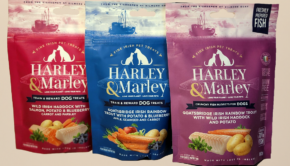




Fans 0
Followers